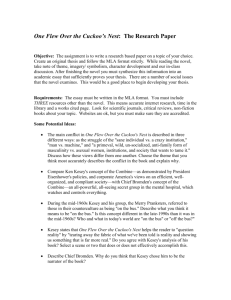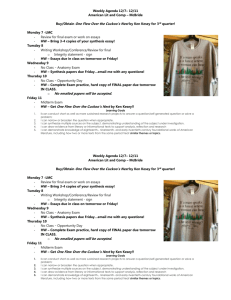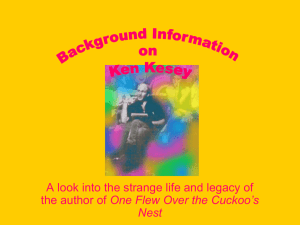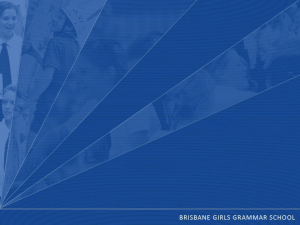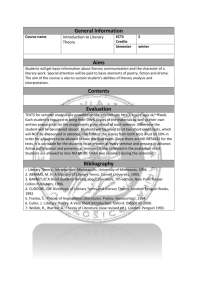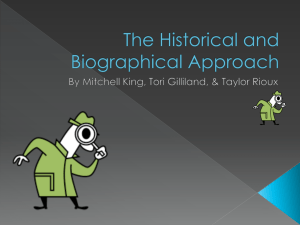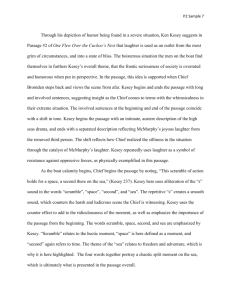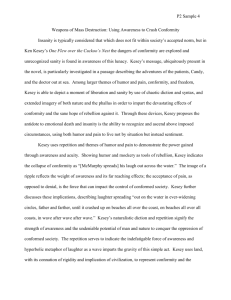Ken Kesey 1935-2001 Thesis A Ken Kesey`s distinct literary voice
advertisement
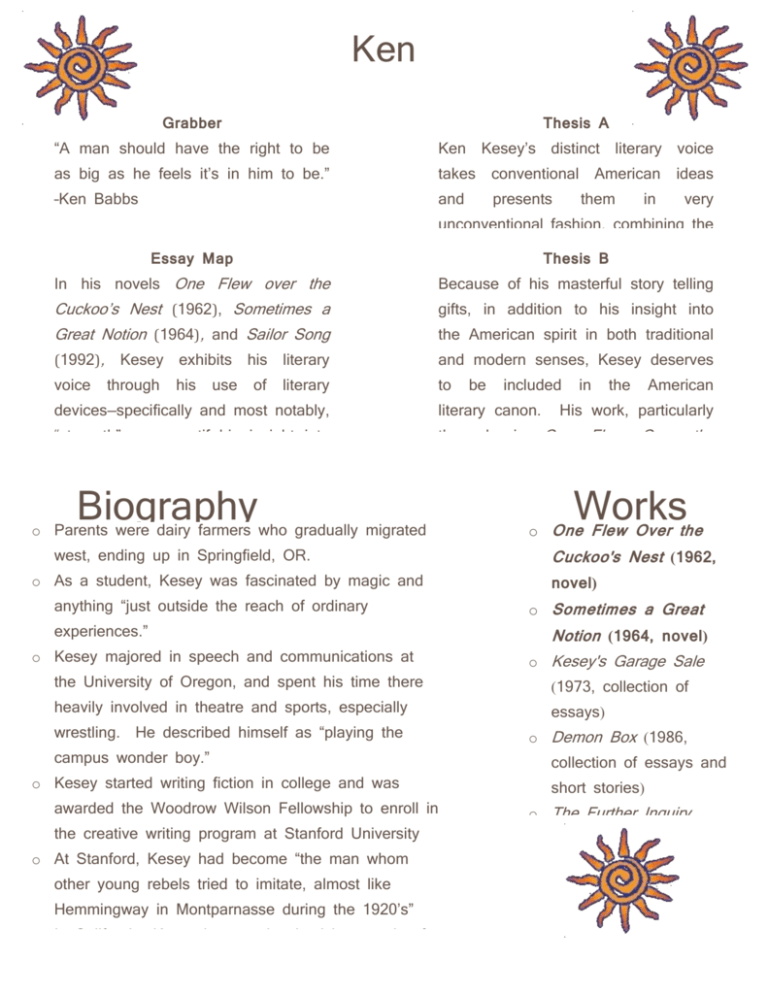
Ken Grabber “A man should have the right to be as big as he feels it’s in him to be.” –Ken Babbs Kesey Ken 1935- takes 2001 Kesey’s Thesis A distinct conventional and presents literary voice American ideas them in very unconventional fashion, combining the Cuckoo’s Nest (1962), Sometimes a self-reliance of the Thesis B traditional American West with the Because of his masterful story telling blurred reality of the 1960s. gifts, in addition to his insight into (1992), Essay Map In his novels One Flew over the Great Notion (1964), and Sailor Song voice Kesey through exhibits his use strength and the American spirit in both traditional his literary and modern senses, Kesey deserves of literary to be included devices—specifically and most notably, literary canon. “strength” as a motif—his insight into the the “grit and gumption” condition of the Biography American West, and his classic in the American His work, particularly One Flew Over the Cuckoo’s Nest and his masterpiece Sometimes a Great Notion, Works embodiment of the Postmodern represents the mindset of a formative o Parents were views dairy farmers who gradually migrated era in American o One history Flew Over philosophical which define the and the the west, ending up in Springfield, OR. Cuckoo's literature of the 1960s. frontier values upon whichNest the (1962, nation o As a student, Kesey was fascinated by magic and was built. novel) anything “just outside the reach of ordinary o Sometimes a Great experiences.” o Kesey majored in speech and communications at the University of Oregon, and spent his time there heavily involved in theatre and sports, especially wrestling. He described himself as “playing the campus wonder boy.” o Kesey started writing fiction in college and was awarded the Woodrow Wilson Fellowship to enroll in the creative writing program at Stanford University o At Stanford, Kesey had become “the man whom other young rebels tried to imitate, almost like Hemmingway in Montparnasse during the 1920’s” o In California, Kesey became involved in a study of psychedelic drugs at Menlo Park’s veteran’s hospital, setting Kesey on a course of personal experiments Notion (1964, novel) o Kesey's Garage Sale (1973, collection of essays) o Demon Box (1986, collection of essays and short stories) o The Further Inquiry (1990, play) o Sailor Song (1992, novel) o Last Go Round (1994, novel, written with Ken Babbs) Distinctive features of Ken Kesey’s Literary work devices—use of “strength” as a motif Literary: “Now that’s real logical, don’t you think? That’s real simple. If You Wants To Win You Does Your Best. Why, a body could paint that on a plaque and hang it over his bedstead” (Sometimes a Great Notion 111). Critical: “It is a recurring conceptual metaphor… ‘Powerful is Big,’ where power and strength are related to size” (Semino and Swindlehurst 8). Philosophical viewpoint—Postmodernism Literary: “Besides, there are some things that can’t be the truth even if they did happen” (Sometimes a Great Notion 74). Critical: Kesey often asserted that “fact and fiction blend well and both are essential in presenting ‘the True Happening of the moment’” (Tanner 5-6). Insight into American condition—frontier values Literary: “Hank scooped him up before he could finish and perched him on his shoulder. ‘Bee-cause, bub, how you ever gonna get fierce, you don’t learn to get out yonder an’ meet the Hidebehind in his own territory? Takes some grit an’ gumption, but it’s gotta be did or you’ll spend your life in a hole like a gopher” (Sometimes a Great Notion 295). Literary: “I’m just as concerned as the next guy, just as loyal. If we was to get into it with Russia I’d fight for us right down to the wire. And if Oregon was to get into it with California I’d fight for Oregon. But if somebody—Biggy Newton or the Woodworkers Union or anybody—gets into it with me, then I’m for me! When the chips are down, I’m my own patriot” (Sometimes a Great Notion 363). Literary: “A man is always surprised just how much he can do by himself” (Sometimes a Great Notion 618). Critical: “His characters flourish best among the innocent ideals of the Jeffersonian landscape… populated with peaceful, hardworking, independent yeomen, roused to instant action by any threat to their independence” (Barsness 30). Critical: “An admiration for self-reliant action runs deep in the American psyche” (Tanner 19). Conclusion “Classics are books that exert a peculiar influence, both when they refuse to be eradicated from the mind and when they conceal themselves in the folds of memory, camouflaging themselves as the collective or individual unconscious” (Calvino 126). Ken Kesey was not included in Bloom’s list. On Sometimes a Great Notion: “The range of subject runs from youth drug culture to redneck intolerance. The range of motifs spreads from Hamlet to Captain Marvel. Allusions to literary classics appear side by side with vernacular oral tales. To get so many diverse elements working harmoniously to convey a definite theme is a singular accomplishment. It requires an effort and concentration that Kesey has shown no inclination to undertake again.” (Tanner 85) Kesey unknowingly summed up his literary career in One Flew Over the Cuckoo’s Nest: “He came to life for maybe a minute to try to tell us something, something none of us cared to listen to or understand, and the effort had drained him dry” (55).
